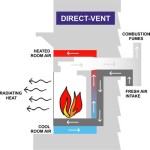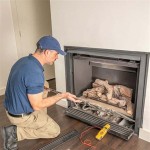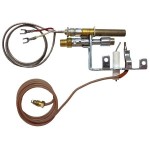Mounting a TV Above a Gas Fireplace: Considerations and Best Practices
The decision to mount a television above a gas fireplace often stems from a desire to maximize space, create a focal point within a room, or simply enhance the viewing experience. While aesthetically appealing, this configuration presents unique challenges that demand careful consideration to ensure both the longevity of the television and the safety of the occupants. The heat generated by a gas fireplace can potentially damage sensitive electronic components within the television, and improper installation can lead to structural instability. Therefore, a thorough understanding of the potential risks and necessary precautions is paramount before proceeding with such a project.
The primary concern when mounting a television above a gas fireplace is heat exposure. Modern televisions are designed to operate within a specific temperature range, often between 60°F (16°C) and 90°F (32°C). Exceeding these temperatures can lead to various issues, including screen discoloration, component malfunction, and ultimately, premature failure of the television. Gas fireplaces, even those with safety features, radiate significant heat upwards, directly impacting the area above the firebox. The intensity of this heat varies depending on the fireplace's design, BTU output, and the presence of a mantel or other shielding mechanisms.
Before undertaking the installation, it's crucial to determine the actual temperature above the fireplace. This can be accomplished using a digital thermometer placed at the intended mounting location for an extended period while the fireplace is in operation. Monitoring the temperature fluctuations over several hours will provide a realistic assessment of the heat exposure the television will endure. If the temperature consistently exceeds the manufacturer's recommended operating range for the television, alternative mounting locations should be considered. Ignoring this critical step can compromise the television's performance and lifespan, potentially leading to costly repairs or replacements.
Assessing Heat Exposure and Mitigation Strategies
Thorough assessment of heat exposure is the first and most important step. The placement of a mantel acts as a heat shield, deflecting rising hot air away from the wall above. A deeper mantel offers greater protection. The distance between the top of the fireplace and the bottom of the television is also a critical factor. A greater distance allows for more heat dissipation, reducing the temperature at the mounting location. Furthermore, the type of gas fireplace significantly influences heat output. Direct vent fireplaces, which draw combustion air from outside and vent exhaust gases directly outside, generally produce less radiant heat compared to vent-free models that rely on room air for combustion. Vent-free models, while often more aesthetically pleasing, pose a greater risk to the television due to the increased heat generated.
If the temperature readings indicate excessive heat, several mitigation strategies can be employed. Installing a deeper mantel or extending the existing mantel can provide a more effective heat shield. Alternatively, a heat deflector can be added to the top of the fireplace to redirect hot air away from the wall. Increasing the distance between the fireplace and the television through strategic mounting bracket placement can also help to reduce heat exposure. Another option is to install a forced-air ventilation system to circulate air around the television, preventing heat from accumulating. These systems typically consist of small, quiet fans that draw cool air from the room and exhaust hot air away from the television. The selection of an appropriate mitigation strategy depends on the specific fireplace design, the room's layout, and the homeowner's aesthetic preferences.
Beyond physical barriers and ventilation systems, consider the usage patterns of the fireplace. Limiting the fireplace's operation to shorter periods or using it at lower settings can significantly reduce heat output. Educating all household members about the potential risks of prolonged fireplace use is crucial to preventing overheating and damage to the television. Implementing these measures, in conjunction with proper installation techniques, can create a safer and more enjoyable viewing experience.
Proper Installation Techniques and Mounting Considerations
Assuming heat mitigation measures are in place and the temperature at the mounting location is within acceptable limits, the next step is to ensure proper installation. This involves selecting the appropriate mounting bracket, securing it to the wall studs, and properly concealing cables. The mounting bracket should be specifically designed to support the weight and size of the television. Overloading the bracket can lead to instability and potential damage. It is strongly recommended to use a full-motion bracket, allowing for tilting and swiveling of the television. This provides greater flexibility in adjusting the viewing angle and can also facilitate access to the back panel for cable management.
Locating wall studs is essential for secure mounting. Using a stud finder, identify the studs behind the drywall and mark their locations. The mounting bracket should be securely anchored to at least two studs. If the studs are not spaced appropriately for the bracket, a wooden backer board can be installed between the studs to provide a solid mounting surface. The backer board should be at least ¾ inch thick and securely fastened to the studs using screws long enough to penetrate deep into the wood. When drilling into the studs, be cautious of electrical wiring and plumbing. Consult with a qualified electrician or plumber if there is any uncertainty about the location of these utilities. Using the correct size and type of screws is also crucial for secure installation. Follow the manufacturer's recommendations for the mounting bracket and ensure that the screws are long enough to penetrate the studs deeply. Over-tightening the screws can strip the threads or damage the drywall, while under-tightening can lead to instability.
Cable management is another important aspect of the installation process. Running power and signal cables behind the wall creates a clean and aesthetically pleasing look. However, this requires careful planning to ensure that the cables are properly protected and accessible. Use in-wall rated cables specifically designed for this purpose. These cables are fire-resistant and meet the required safety standards. Install a conduit or cable management sleeve to protect the cables from damage and make it easier to add or remove cables in the future. Ensure that the cables are not pinched or strained, as this can damage the insulation and compromise the signal quality. Leave enough slack in the cables to allow for movement of the television without putting stress on the connections. Properly concealing the cables not only enhances the aesthetics of the installation but also reduces the risk of tripping hazards and electrical shock.
Electrical Safety and Code Compliance
Electrical safety is a paramount concern when installing a television above a gas fireplace. Improper wiring or connections can create serious hazards, including electrical shock and fire. All electrical work should be performed by a qualified electrician in accordance with local electrical codes. Before starting any work, disconnect the power to the circuit that will be used to power the television. Use a circuit tester to verify that the power is off. The television should be plugged into a dedicated electrical outlet, preferably one that is equipped with a ground fault circuit interrupter (GFCI). A GFCI outlet can detect ground faults and quickly shut off the power, preventing electrical shock. Do not overload the electrical circuit by plugging too many devices into the same outlet. This can cause the circuit breaker to trip or, in more severe cases, lead to a fire.
When running electrical wiring behind the wall, ensure that it is properly protected and secured. Use electrical staples to secure the wiring to the studs, keeping it away from sharp edges and potential sources of damage. Follow all applicable electrical codes regarding the type and size of wiring used, as well as the methods for connecting the wires. Incorrect wiring can create a fire hazard or cause damage to the television. If you are unsure about any aspect of the electrical work, consult with a qualified electrician. They can ensure that the installation is safe and compliant with all applicable codes. Obtaining the necessary permits for the electrical work may be required, and failing to do so can result in fines or other penalties.
In addition to electrical safety, it's also important to consider fire safety. Ensure that the television and its cables are not placed too close to the fireplace, as this could create a fire hazard. The mantel should provide adequate protection from the heat of the fireplace. Regularly inspect the wiring and connections for any signs of damage or wear. Replace any damaged wiring or connections immediately. Install smoke detectors in the room to provide early warning of a fire. Develop a fire escape plan and practice it regularly with all household members. By taking these precautions, you can significantly reduce the risk of fire and ensure the safety of your home and family.

Can I Mount My Tv Above The Fireplace

Can I Mount My Tv Above The Fireplace

ᑕ❶ᑐ What To Consider Before Mounting A Tv Above Fireplace

Ortal S Innovative Technology Makes It Safe To Mount A Tv Above Your Fireplace

Mounting Your Tv Above Fireplace

Can I Hang A Tv Over My Fireplace Woodlanddirect Com

Pros And Cons Of Mounting Your Tv Over Fireplace Vancouver Gas Fireplaces

Mounting A Tv Over The Fireplace Common Myths Busted Cepro

How To Safely Mount Your Tv Above The Fireplace

ᑕ❶ᑐ What To Consider Before Mounting A Tv Above Fireplace
Related Posts








